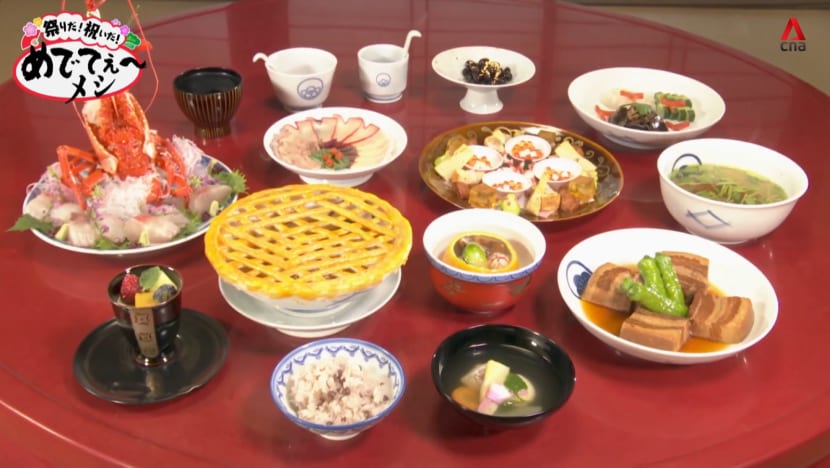Japanese Festival - Karatsu Kunchi Festival in Saga/Mysterious Event in Yamagata
Festivals where giant floats and "gods" are paraded around towns, the people involved in these events and the types of local cuisine eaten during each area's celebrations are highlighted this week.

There are festivals held in various parts of Japan that carry on culture and traditions. There are also many celebrations unique to each area. So this week, we will check out some interesting festivals and celebrations, while also discovering exquisite local cuisine.
Our first stop is Karatsu City, facing the Sea of Genkai in the northwestern part of Saga Prefecture. It has a population of approximately 120,000 people. A major event here is the Karatsuji Shrine Autumn Festival, also known as Karatsu Kunchi. It is held every year in November over three days. According to an oral tradition handed down to the family of priests, in the Edo era, the practice of carrying a deity on a portable shrine and parading it around the city began. So these days, during the Karatsu Kunchi festival, the god of Karatsu Shrine is placed on the o-mikoshi portable shrine and is taken to its destination in Nishi-no-hama.
Fourteen festival floats accompany the portable shrine and are paraded around the town. Each float has a different shape, weighs about two tonnes and is almost 10m high. The oldest festival float, Akajishi, was made more than 200 years ago. Nearly all the festival floats have been used for more than 100 years and are repaired along the way. It takes three to six years to make each float, with each costing around 150 million yen to build. The climax of the Karatsu Kunchi festival is the moment when the floats are pulled into Nishi-no-hama. About 200-400 people, from children to adults, pull each festival float.
There is a person who directs each festival float. We meet one of them, Motoaki Maekawa. He shows us the “Saihai”, which is waved on top of the festival floats to give different directions. After this, we observe the "Shachi" festival float - created in 1929 - being repaired. The lacquer colour on the float has faded, with some damage seen. So it is being repaired for the first time in 32 years at a cost of approximately 53 million yen. If one looks inside the float, one can see the names of all the craftsmen who have worked on the float before.
We next head to Ryokan Omasa, which has been in Karatsu City for more than 65 years. It serves Sea Bream Shiogamayaki, which is often eaten during celebrations. Salt and meringue are used to cover the sea bream after which it is baked for 40 minutes.
Our next destination is Noto Peninsula, Ishikawa Prefecture. The Noto Kiriko Festival is celebrated here between July and October each year to wish for a good crop harvest and catch of fish. It takes place in nearly 200 areas across Noto Peninsula, with each place celebrating it in different ways. During the festival, people usually parade around the town carrying a huge kiriko or lantern. In Suzu City’s Jike Kiriko Festival, a 16.5-metre-high kiriko strolls around the town. In Wajima City’s Wajima Great Festival, there is a full line-up of lacquered kiriko. Meanwhile, the special feature of the kiriko parade in the Saikai festival in Shikamachi is that the kiriko is carried by women.
We move on to Suneoriamagoi in Saitama Prefecture. The Amagoi festival has been taking place here once every four years in September since the Edo era when people would pray for rain. A "dragon god" with a total length of about 36m is carried and paraded for about 2km to Kandachigaike.
Next up is Kaminoyama City in Yamagata Prefecture. It is a town with a population of approximately 30,000 people. In the Edo period, it flourished as a postal town. It is now a well-known hot spring resort. An event called Kasedori is held here every February. During the festival, people put Kendai straw woven into the shape of a rain cape over their heads, becoming Kasedori, the messenger of god. They then sing and dance their way into town. The townspeople would pour water over them to wish for good crops, fire safety and commercial prosperity.
Kasedori is said to have started in the Edo era, but it stopped in 1896. It was revived by volunteers in 1969. In 1986, the Kasedori Preservation Society was inaugurated. It was hard to get enough dancers, so the society decided to recruit participants from all over Japan. Subsequently, the number of young people taking part in the event began to increase. The festival also has participants from overseas, one of whom is Hana Macheik from Poland. She moved to Kaminoyama City a few years ago and works at the Kaminoyama City Office as an international relations coordinator. She takes us to Sabu-chan Ramen near her workplace and orders Hiyashi Ramen. It was created by a ramen restaurant in Yamagata Prefecture in 1952 and is now a popular menu item available at around 100 eateries within the prefecture. It features a soy sauce-based soup packed with different items such as char siu tempura and home-grown tomatoes.
Another restaurant serving Yamagata’s local cuisine is Hanazen, which is near Yamagata Station. It serves Kandara cod soup with sake lees, which is eaten on special occasions. It includes boiled cod, tofu and leek, with a sprinkling of aonori seaweed.
1) Check out the 14 festival floats of the Karatsu Kunchi festival
2) Hiyashi Ramen is a must-try item when visiting Yamagata Prefecture












